As the autumn temperatures drop, it’s essential to learn how to pest-proof your house to prevent common seasonal pests from entering your home.
As the weather cools down, typical household pests such as rats, mice, and fleas move indoors. Additionally, you may have to deal with bed bugs and squirrels. Pest-proofing your property will not only prevent infestations but may also save you money in the long run.
We’ve got some ideas and tips for the whole house in this handy guide, so keep reading!
Table of Contents
Pest-Proof Your House’s Doors and Windows
Sealing holes around windows and doors is one of the most crucial things you can do when it comes to keeping pests out of your home. Particularly as the temperature cools and they begin looking for warmth, these areas are excellent targets for pests. Even the tiniest fissures can provide an open invitation for rats, mice, or insects seeking passage.
Try weatherstrips around door frames to obstruct their route. By removing drafts, they not only improve energy efficiency but also form a solid barrier to stop pests from finding their way inside. Install door sweeps at the bottom of doors to fill any gaps between the floor and the door. For outside doors, or those leading to areas pests love to access—garages and basements, for example—this is particularly beneficial.
See the frames for any cracks or worn-out seals on your windows. Should you discover any, plug cracks with caulking to prevent pests from seeping through. Fly screens for your windows could possibly be something you wish to add to enable you to enjoy fresh air free from pest concerns.
How to Pest-Proof Your House’s Roof
Squirrels, birds, bats, and rats are common roof dwellers who look for tiny crevices, finding their way in to make nests, causing problems such as a deteriorated roof, damaged electrical cables, and increased fire potential. Let’s not forget the annoying noises and the damage they can cause to your possessions.
Knowing how to pest-proof your house, starting with the roof, will help keep mice and other pests out of your home. Since rats and mice can fit through tight spaces, having a professional check your roof for possible entry points is essential to prevent infestations.
Nowadays, the open chimney is rarely found in houses since most new construction has gas fireplaces. Even so, you should still know how to pest-proof one. Autumn is the perfect time for pests like birds and squirrels to build their nests in your chimney.
- Look for loose shingles or areas of your roof that are pulling away from your awning.
- A thorough inspection should be made of all vents, roof returns, and flashing along with your chimney and skylights, which can provide pests with easy access into your home.
- Cover any vents nearby with mouse mesh, and replace any damaged eaves. A hole in the eave allows direct access to the loft.
- There will be gaps where the chimney meets the roof, sealed with tar, tiles, and sealants. Eventually, this weathering and breakdown leave the gaps exposed. Therefore, you need to re-seal them.
- Make sure your gutters are fixed and that their sealant is in good shape. Without regular clean-up, leaves and twigs become an ideal breeding ground for pests looking for a warm place. It may sound like a simple task to unclog your gutters yourself if you have a ladder, thick gloves, and excellent balance. In case pests are lurking within, you need to be sure you remove them properly. Pest control experts may be required depending on the type and extent of the infestation.
- Installing gutter guards is also an option. The screens are filled with tiny holes and are fixed to the roof, covering the gutter completely. Gutters come in a variety of shapes, sizes, and materials and are easy to install.
How to Pest-Proof Your Loft/Attic
When the weather is cold, pests like rats and mice find a cosy refuge in lofts. Their new home will offer them peace, quiet, warmth, and a great food source. Lofts are also full of nesting materials you may not even realize you have.
Renters and homeowners across the country will be dreading the patter of tiny feet above their heads as rats, mice, and squirrels seek refuge from the cooler weather in loft spaces. They cause sleepless nights as they scratch, gnaw, and rip apart items for nesting materials. You must locate and repair any entry points in the loft, as well as:
- Inspect all damaged and broken tiles on the roof and replace them;
- If there are cracks, fill them with roofing cement and seal off the entry points. Look for gaps in facia, soffits, roofline, chimneys, and roof vents, for instance;
- To check for infestations in your roof space, conduct regular inspections;
- To the extent possible, keep your loft neat and clutter-free;
- Keeping stored items in plastic boxes is a good idea – try to avoid cardboard boxes whenever possible;
A quick inspection of your loft spaces is recommended before winter starts, even if you haven’t had any issues with pests so far.
Are you dealing with a pest infestation?
You don't have to be alone in the battle against pests. Hire a professional pest expert!
Call usHow to Pest-Proof Your Bedroom
Moths are one of the most common pests in the UK. The temperature is dropping, which means that winter clothes are being pulled out of storage. In this case, you are likely to notice some holes in your clothing because of a moth infestation.
- Moth killer strips can help if you have a problem with these pests;
- Make sure cracks and gaps around windows are sealed;
- Clean the entire room with a vacuum. Also, always check your bed frame, headboard, and mattress for bugs after you replace your sheets;
- If you suspect that your carpets and furniture are infested, replace them. When buying second-hand furniture, make sure to check for bugs before you buy or bring the item into your home;
- Additionally, avoid eating in your bedroom;
Another pest problem you can encounter in your bedroom is bed bugs. It’s an all-year-round problem, but it becomes particularly prevalent around this time of year.
How to Pest-Proof the Walls
It is crucial to inspect the cavity of the wall to avoid pest infestations. Apply concrete at the baseboards to prevent rodents from burrowing into the house, and seal all entry holes present.
It would be best if you did not underestimate a mouse’s determination. These creatures can climb, jump, and burrow into almost any area of their choice, including the cavity of walls.
Check also: How to Get Rid of Mice In the Walls
Several insects can invade and settle in your walls, including outdoor cockroaches and carpenter ants. To prevent pests from penetrating walls, it is essential to block their access points.
- Have a professional seal the cracks and gaps on the house’s exterior that could be entry points for these pests;
- In the same way, water attracts a lot of pests, so make sure any leaks are repaired;
- In addition, you should move firewood piles away from your home so they don’t touch the walls, and you should keep vegetation at least six feet away from the foundation;
- It is best to prevent trees and vegetation from coming in contact with any part of the house since they create travel paths for pests;
- Check the outside wall to make sure that there are no air bricks broken – the larger Victorian air bricks often have gaps large enough to let mice in. You can install mesh panels over the airbricks to prevent unwelcome visitors from getting in;
How to Pest-Proof Your Basement or Crawl Space
Pests of all sizes love the cool, dark, underground environment provided by basements. Here are some precautions you can take to keep them away.
- Avoid accumulating trash or recycling.
- If you store perishable food, ensure that it is stored in airtight containers or plastic bags.
- Check for cracks in the foundation or walls and seal them as soon as possible.
- Make sure the walls and floors are dry. Dehumidifiers and moisture-control professionals can help if the problem is damp.
- When storing clothes or paper in your basement, ensure that they are kept away from moisture and preferably in airtight containers.
- Don’t let laundry pile up on the floor.
Natural darkness in your basement gives pests more comfort as they roam hunting for food and mates. A basement’s reputation as one of the least-used parts of a house is also a plus. Pests are especially fond of cluttered basements, where they can hide in relative cover and enjoy permanent darkness.
Adding boxes, bags, and old furniture to a basement can be an ideal home for pests seeking to establish a family. When you keep your basement free of clutter and adequately lit, it will no longer be a convenient hiding place.
How to Pest-Proof Your Bathroom
There is one thing that pipes, drains, sinks, baths, and showers have in common: water. You can attract pests to your bathroom due to this moisture. They can go for days without food, but not without water. Plumbing systems that are poorly maintained will leak. Water standing in any form will invite pests, such as silverfish, cockroaches, and flies.
The presence of silverfish may suggest that something more serious is at play. Your gutters could be clogged, or water may be accumulating somewhere after it rains, causing damage to the wood in your home. Rotting wood is one of the major causes of silverfish infestations since it provides excellent entry points for these pests.
- Maintain your pipes regularly to prevent leaks. Using a flashlight, inspect and caulk all possible entry points.
- Under your sink, look for any gaps and fill them with silicone or urethane foam.
- Immediately after hot baths or showers, open a window or use a fan to vent steam.
- Additionally, you can use a drain plug to cover the sink and tub drain when not in use.
Check also: How to Get Rid Of Cockroaches in Your Sink and Drains
How to Pest-Proof Your Garden
- General yard cleaning. Clean out the window wells and drains and remove leaves and grass clippings from around the foundation. Eliminate entry points by pruning shrubs and tree limbs touching the house.
- Use pest-resistant trash cans. Ensure that the lids are self-closing with a tight seal, and clean the dumpsters frequently.
- Pests will not be drawn into an area if the compost bin is well-kept. Do not compost any meat, fish, bones, oily or greasy foods.
- Performing regular maintenance checks is crucial. Among the steps required for this are specific “walkarounds” to inspect any previously active insect areas and ensure the pest-proofing measures remain intact.
- Gutters and pipes are crucial for maintaining the integrity of your property since they provide a place for water, rain, and melting ice to drain.
In Short
It’s great to see wildlife in parks, but when they find their way into your home, it can be a whole other story. There are numerous ways pests can cause significant damage to your house by building nests indoors.
There is nothing fun about dealing with pests. In addition to being disruptive and destructive, they can also be hard to eliminate. The sooner you take action, the better. If pest-proofing is appropriately done, it will reduce your pest management costs over time. A pest-proof home can be achieved with professional pest control assistance and preventative measures. By following the general measures described above, you will be able to remove pests from your home easily and effectively.
Are you dealing with a pest infestation?
You don't have to be alone in the battle against pests. Hire a professional pest expert!
Call us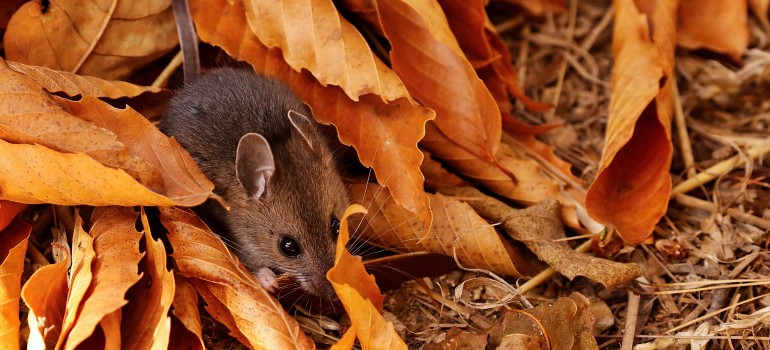

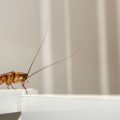


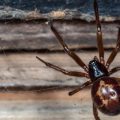
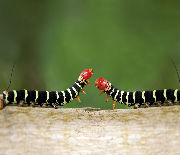
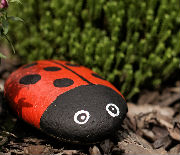
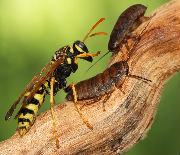
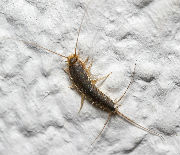
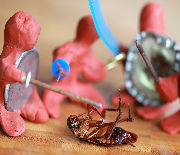
Leave a Reply